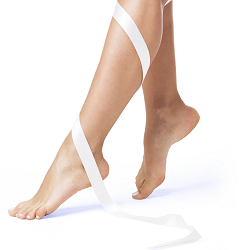
Varicose veins appear just under your skin surface in your lower body, especially in the legs, ankles, and feet. These blood vessels are swollen because of the weak walls. When the valves are not functioning correctly, proper blood circulation is not going on. This makes the veins appear purple and red. And you can notice the bulges on the skin surface of your legs, ankle, and feet."What are the Treatment Options for Varicose Veins?" Many treatment options available can treat varicose veins but can appear back in the new veins.
Varicose veins can be painful or itchy, but spider veins are not harmful. They are considered cosmetic issues. Small red or purple cords appear close to your skin’s surface. But treating them is also essential.
Sometimes they do not cause pain or discomfort, and varicose veins aren’t dangerous for most people. But in some cases, severe varicose veins that have not been treated can lead to serious health concerns, such as blood clots. The pain and discomfort symptoms caused by varicose veins can be relieved at home. You need to take some care and exercise, or you can talk to your healthcare provider, who can treat them with injections, laser therapy, or surgery.
You may feel swelling in your legs, ankles, and feet. There might be some skin discolorations and ulcers, if left untreated, varicose veins cause brown bruises on your skin, and if they have become painful varicose veins, they can cause venous ulcers on your skin surface.
The minimally invasive treatment are:
Invasive treatment options are available for varicose veins and spider veins diseases. The most popular techniques that are effective too include:
Sclerotherapy
In the Sclerotherapy method, the doctor will inject a special solution into the vein. Through this solution, the infected veins vanish and are absorbed by the body. The blood is transferred to another nearby healthy vein, and then the new vein travels the blood back to the heart. The solution fades away the infected vein completely.
Saphenous Vein Ablation
It is also known as Endovenous Ablation; this method involves radiofrequency energy to close off the infected vein and fades it away. This method treats the veins by heating the walls using radiofrequency. When the doctor triggers the heat on the infected veins, the vein walls collapse, close, and seal shut due to the heat. This technique is less invasive but effective as surgical treatment such as Saphenous Vein Litigation and Stripping or Varicose Vein ablation.
Endovenous Laser Treatment
One of the most frequently advised treatments for large varicose veins is endovenous laser treatment (EVLT). It is an effective treatment for varicose veins especially. For aesthetic ideals, varicose veins are frequently treated with EVLT, also called Endovenous Laser Ablation. However, it can also eliminate or lessen the uncomfortable symptoms of varicose veins, like swelling, itchiness, discomfort, inflammation, or aches and pains.
Microphlebectomy Treatment
It is another efficient, minimally invasive procedure to treat damaged varicose veins in the legs. It is often referred to as ambulatory phlebectomy. Doctors use Microscopic incisions to pull the veins from the leg’s skin. When sclerotherapy does not work and is ineffective in the veins, the treatment is often conducted to treat more prominent varicose veins and may be an option.
How common are varicose veins? Varicose veins are common in people, and almost 1/3 of all adults suffer from this disease. But with these treatment options, you can now treat large varicose veins.
In Conclusion:
These less invasive treatment options are now helpful in treating varicose veins and fading them completely. But new varicose veins can occur in your legs. Visit your doctor for more information about treatment options.
Article Source : https://www.gohealthtips.com/what-is-the-minimally-invasive-varicose-veins-treatments/




Load more comments